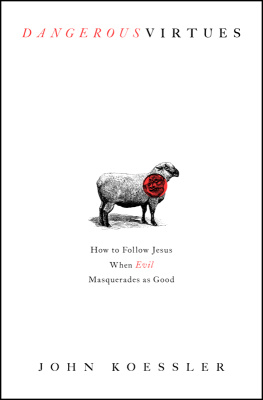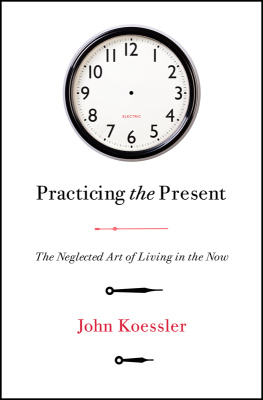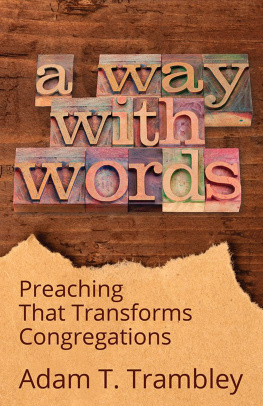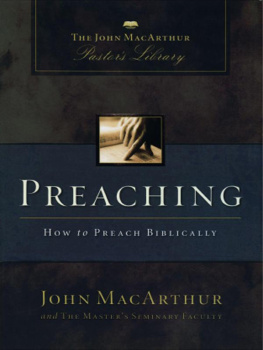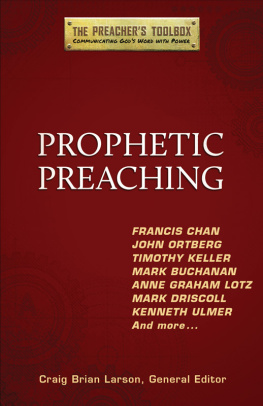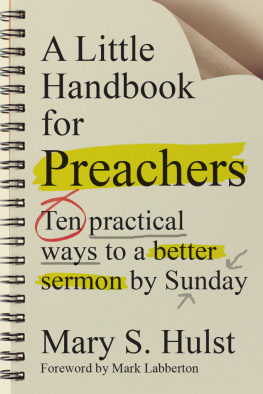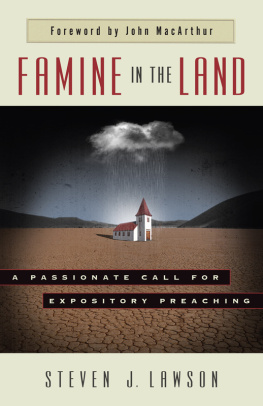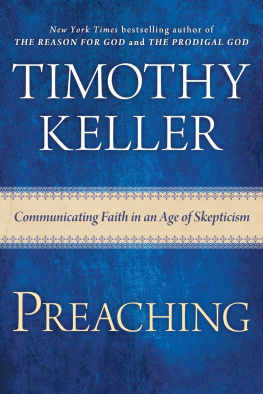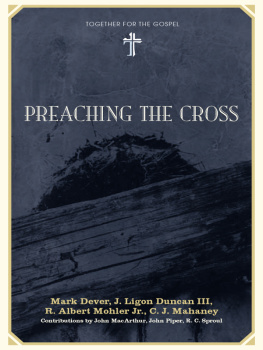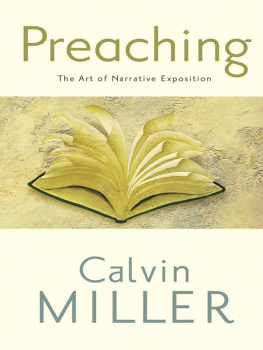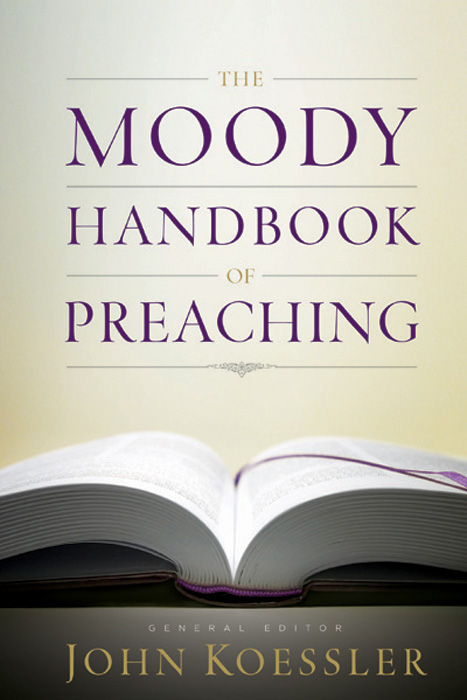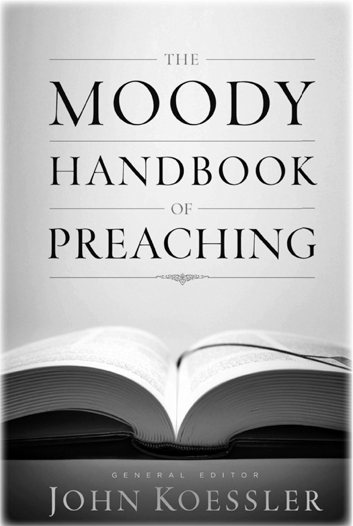
M OODY P UBLISHERS
CHICAGO
2008 by
T HE M OODY B IBLE I NSTITUTE
OF C HICAGO
All rights reserved. No part of this book may be reproduced in any form without permission in writing from the publisher, except in the case of brief quotations embodied in critical articles or reviews.
All Scripture quotations, unless otherwise indicated, are taken from the Holy Bible, New International Version. NIV. Copyright 1973, 1978, 1984 by International Bible Society. Used by permission of Zondervan. All rights reserved.
Scripture quotations marked NASB are taken from the New American Standard Bible, Copyright 1960, 1962, 1963, 1968, 1971, 1972, 1973, 1975, 1977, 1995 by The Lock-man Foundation. Used by permission. (www.Lockman.org)
Scripture quotations marked ESV are taken from The Holy Bible, English Standard Version. Copyright 2000, 2001 by Crossway Bibles, a division of Good News Publishers. Used by permission. All rights reserved.
Scripture quotations marked NLT are taken from the Holy Bible, New Living Translation, copyright 1996. Used by permission of Tyndale House Publishers, Inc., Wheaton Illinois 60189, U.S.A. All rights reserved.
Scripture quotations marked TNIV are taken from the Holy Bible, Todays New International Version TNIV. Copyright 2001, 2005 by International Bible Society. Used by permission of Zondervan. All rights reserved.
Scripture quotations marked NET are taken from the NET Bible (New English Translation). Copyright 19962006 by Biblical Studies Press, L.L.C. All rights reserved. Used by permission.
Scripture quotations marked KJV are taken from the King James Version.
Editor: Jim Vincent
Interior Design: Ragont Design
Cover Design: Smartt Guys design
Cover Image: iStockphoto/Zbigniew Kocielniak
Library of Congress Cataloging-in-Publication Data
Koessler, John, 1953
The Moody handbook of preaching.
p. cm.
Includes bibliographical references and index.
ISBN-13: 978-0-8024-7064-5 (alk. paper)
ISBN-10: 0-8024-7064-5 (alk. paper)
1. Preaching. I. Title.
BV4211.3.K63 2008
251dc22
2007048912
We hope you enjoy this book from Moody Publishers. Our goal is to provide high-quality, thought-provoking books and products that connect truth to your real needs and challenges. For more information on other books and products written and produced from a biblical perspective, go to www.moodypublishers.com or write to:
Moody Publishers
820 N. LaSalle Boulevard
Chicago, IL 60610
1 3 5 7 9 1 0 8 6 4 2
Printed in the United States of America
CONTENTS
1. Losing the Center
John Koessler
2. Why Expository Preaching?
Michael Easley
3. The Sermon in Public Worship
H. E. Singley III
4. Applying Scripture to Contemporary Life
Winfred Omar Neely
5. Why I Love to Preach
Joseph M. Stowell
6. Evangelism and Preaching
George Sweeting
7. How Women Hear the Sermon
Pam MacRae
8. Preparing Yourself Spiritually for the Message
Dan Green
9. Preaching Historical Narrative
Michael Rydelnik
10. Preaching from Didactic Literature
David Finkbeiner
11. Preaching from the Poetic Books
Andrew J. Schmutzer
12. Preaching from the Prophets
Walter McCord
13. Using Biblical Hebrew in Sermon Preparation
Andrew J. Schmutzer
14. The Use and Abuse of Greek in Preaching
Gerald W. Peterman
15. The Power of Comparison
John Koessler
16. Felling the Devil
Rosalie de Rosset
17. History: The Hidden Gold Mine
Thomas Cornman
18. Learning to Tell the Story
William Torgesen III
19. Film as a Means for Worship and Illustration
Michael Orr
20. Drama and the Sermon
Kelli Worrall
21. Using Technology to Enhance the Sermon
Paul Butler
22. Sermons that Move
Winfred Omar Neely
23. The Logic of the Sermon
Bryan ONeal
24. Exegeting Your Audience
Michael Milco
25. Now, Deliver the Goods!
David W. Fetzer
26. Abuse It and Lose It
Terry Strandt and Jori Jennings
27. Using Bible Software to Exegete the Text
James Coakley and David Woodall
ACKNOWLEDGMENTS
C learly a book like this is a collaborative affair. In addition to the fine authors who have contributed chapters to this book, there are others to whom I owe a debt of gratitude. I want to express my appreciation to Dr. Michael Easley, who initially encouraged me to take on this project. I must also thank Greg Thornton, Dave DeWit, and Tracey Shannon at Moody Publishers for their enthusiasm and support.
As a writer, I learned long ago that the unsung heroes of every book are the editors who labor behind the scenes and wrestle with the language and egos of the writers they serve. I am not speaking here of the general editor but of the real editors, the women and men who dwell in that murky world of grammar, syntax, and footnotes. Billie Sue Thompson and Jamie Janosz served in this capacity for this project. It has been a privilege to have them as my colleagues at the Moody Bible Institute and it is a particular pleasure to labor with them on this book. Jim Vincent served as the developmental editor for this project. If there is any elegance or style in it the credit must go not only to the fine authors who contributed the chapters but to them. Their names deserve to be on the cover.
Most of all, I must express my deep gratitude to the Lord Jesus Christ, whose calling in my life brought me to the pulpit. I began preaching more than thirty years ago. After all these years, the excitement and mystery of this task continue to captivate my heart. It is my prayer that this book will kindle a similar fire in the hearts of those who read it.
INTRODUCTION
I once heard master homiletician Haddon Robinson say that he had devoted his life to answer one question: Why is it that some can preach for an hour and it seems like five minutes while others preach for only five minutes and it seems like an hour? This book attempts to provide an answer to that question. Its aim is to do more than merely help the reader understand the basics of a good sermonthe contributors fill in some of the gaps left by other books on homiletics.
In our effort to accomplish this goal, we have added to the basic question posed by Dr. Robinson. Is expository preaching still necessary? What role does the sermon play in todays worship? How do we make sure our use of story does not take over the sermon? Does technology help or hurt the sermon? Why do many of todays sermons seem so dull? How do men and women hear the sermon differently?
The contributors to this book also deal with some of the fundamental questions of sermon formulation. How should a sermon based on a biblical narrative differ from a sermon based on a didactic passage? When and how should the preacher refer to the original language? How has the use of Bible software changed sermon preparation?


